barrygrussell
Senior Member
Originally posted on my blog, Under the Helmet
Ahead of the official launch in Thailand of the brand new Michelin Power RS, I was one of a mixed group of riders invited to test the French tyre giant's latest sport-road tyre innovation by distributor Radial Tab (RDT) at Thailand Circuit, some 70 kilometres from the centre of Bangkok. I was there as a regular road user and sometime track rider.
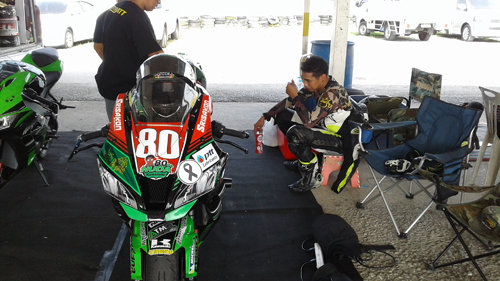
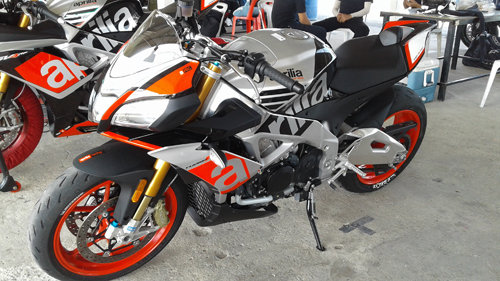
The homework I did before the test, in January 2017, got me interested. Here was a new tyre developed to deliver excellent performance in cold, hot, dry or wet conditions - and to provide good durability. Were too many compromises required to deliver all of this?Michelin's research and development team identified that despite the climate differences around the world, riders who buy sport road tyres use their bikes in very much the same way: they want to have fun and mostly in dry conditions. With power, chassis and suspension development of sports bikes moving fast, delivering power to the road or track in a safe, predictable way is a tough and continuously changing challenge.Naturally I was expecting a tyre with a dual compound: softer on the edges and harder in the middle, but there is much more to the technology than that. The Power RS is a product of Michelin's Adaptive Casing technology (ACT+), which the company claim is the biggest breakthrough since the radial motorcycle tyre in 1987.
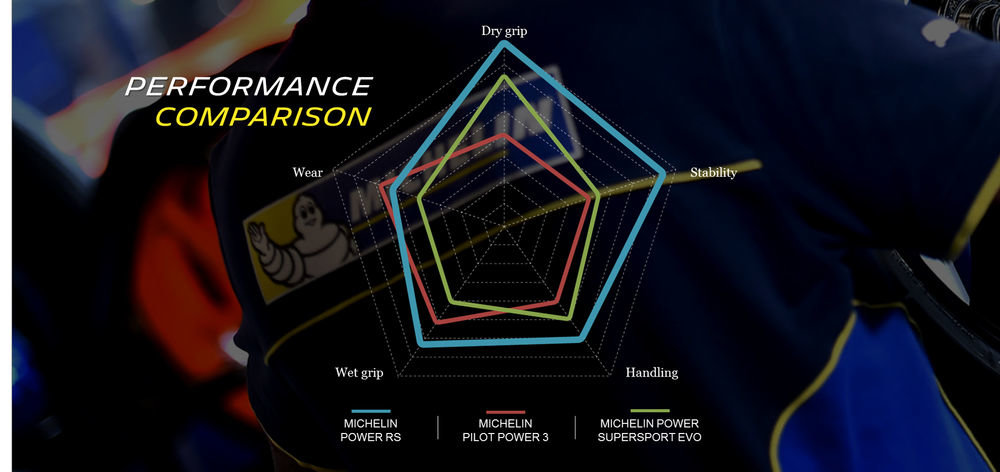
ACT+ consists of a single, variable-angle casing ply. At the crown the angle is close to 90 degrees to give enhanced flexibility and high speed straight line stability, while at the shoulder the ply is folded back over itself to reduce sidewall flex and give better tracking through corners. Like the Pilot Power 3, the Power RS uses a harder, silica rich compound at the crown and softer, carbon black shoulders. The short, deep grooves are cut to expel water at moderate lean angles, as road riders generally do not go to the edges of the tyres on wet roads.
Technology aside, the Power RS looks cool, its tread identifying it as a relative of the Power Cup Evo. Michelin are clear that this is a not a track tyre, but a road tyre you can use on the track.
In keeping with my role in RDT's testing programme, I rode to Thailand Circuit on my Kawasaki Z800, shod with the Pilot Road 3s I had bought some five months previously to replace the original Dunlops. With a couple of trackdays and less than 4,000 kilometres of total use, they were nicely scrubbed, but otherwise showing few signs of wear and tear. I had last ridden them on track the previous weekend, so would be able to make a useful performance comparison. I was the last of the testers to arrive, so had time to look around and talk to the other riders while I waited for the technicians to change my tyres. Among them were former 250 two-stroke GP racer Ben Reid and Apidej Boonsri, a top Superstock 1000 contender in the FMSCT All Thailand Superbike Championship. Ben was running in a newly delivered Aprilia RSV4 Factory also destined for Superstock success, while Apidej was on his hitherto Pirelli-shod Kawasaki ZX10R. Both bikes were testing Power Cup Evos and the paddock chatter was that the Thai rider had already knocked a full second off his previous best time at the Nakhonchaisri circuit. Meanwhile Ben, a man who is not easily pleased, was waxing lyrical about the hoops on his new machine.
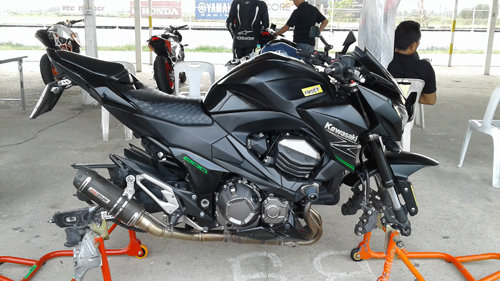
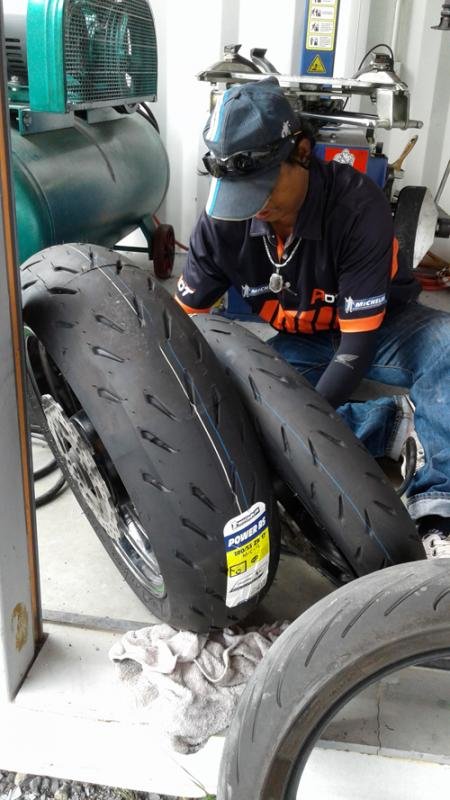
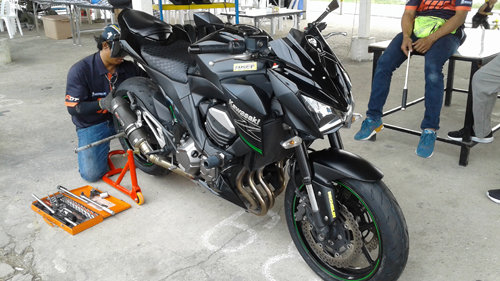
The Tuono ride was too much of a sensory overload to isolate the contribution of the tyres, so I waited as patiently as I could for the tyres on my Z800 to get swapped over. Reminding myself that no matter how good the Power RS would be, mine were still cold and still shiny from the mold release agent, I went through the first few turns fairly gently, turning a little faster and harder each time. By the time I started my third lap, I was feeling confident, blasting down Thailand Circuit's short start-finish straight and braking hard on the rippled approach to the hairpin at Turn 1, keeping pressure on the front brake as I turned in. There was no drama, so I knew I was still a long way from the limits.
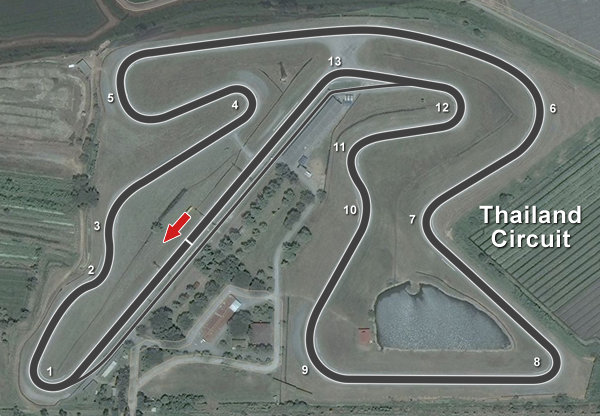
Of course, I was riding the motorcycle that gets me to work and back, around Bangkok for meetings and out of town on the odd occasion I have a free weekend, so I edged closer to the limits progressively. I worked on braking later, turning the bike in harder, increasing the lean angle and getting on the power earlier. Every time I pushed, the tyres asked me, "is that all you've got?" Even on the 'hold on tight' bumpy approach to Turn 6, a long, fast, right hander, the tyres worked with my stock suspension to keep things in line, despite the bucking effect that makes it wise to keep your teeth clenched to avoid biting your tongue. Extra demands from unforced errors - usually braking late and getting off the clean racing line were also forgiven without fuss.
Few riders stay on the demanding, 2.5 kilometre track for more than 15 or 20 minutes at a time, but I was so deep into the happy zone of being relaxed mentally and physically, it was only a glance at the clock that told me I had been on track for more than 30 minutes. Checking myself, I realised that my confidence had grown sufficiently to set myself up for a crash, so I reeled off another two laps and came back to the pits.I was in only long enough to drink a litre of water and jumped back on while the tyres were still hot. However, the break had allowed fatigue to creep in, so I gave it another 15 minutes, knowing that I would not find out anything new, and came back in to refresh myself and do a video interview, before the one hour blast in fading light back to Bangkok.
Already a happy Michelin user, I confess I was ready to be impressed by the new Power RS, but it exceeded my expectations on that first outing. More than anything I enjoyed the performance of the front tyre, trail braking and getting accurate feedback from the soft edges. The rear tyre gripped well mid turn and bit hard under power at the exit. In a nutshell, I was able to get more performance out of the Kawasaki than had been possible on the Pilot Road 3 and the original Dunlops before that. In other words, I had more fun.
You can see a video of the test, with comments from Thai and English speaking riders on this link [there is not a version I can embed].
Riding within Bangkok's city limits holds different challenges for riders who like to 'make good progress' on their urban journeys. The traffic volume in Thailand's capital city is notorious, demanding that riders of large capacity motorcycles get their forward planning right and snap up any bike-sized space as it opens up. That is more of a game of strategy than a mechanical test, but it does take place on roads that are either potholed (nothing new for a Brit) or so finely polished that you have to ride as though they are wet, which makes finding grip an issue. That is fun when you put the power on - half throttle will spin the back wheel in the first three gears on stretches of Petchaburi Road among others - but needs a sensitive touch with the front brake when a cart with a wok full of boiling fat is pushed out into your path and you don't have ABS. Even without random obstacles coming at you, hard braking on tricky surfaces is fun and I can definitely squeeze the lever harder on the Power RS than I could on the Power Road 3 before I hear the warning 'chirrup'. Spinning up the rear often used to happen unexpectedly, but now requires a deliberate act of hooliganism, as the grip at the crown will take more power before it breaks loose. I have also attacked bends where the rear would step out previously and gone round faster with wheels in line.
The condition of the tyres now is scrubbed and showing no signs of excessive wear or squaring off from the use they have had so far.Meanwhile, my Power Road 3s are still being stored at Thailand Circuit. I have a vague plan to put them back on when the rains arrive in July, but will try them in the wet before I do.
My experience with the Michelin Power RS so far has convinced me that I have the best tyres money can buy for the bike I own and the mixed use that I make of it.
Ahead of the official launch in Thailand of the brand new Michelin Power RS, I was one of a mixed group of riders invited to test the French tyre giant's latest sport-road tyre innovation by distributor Radial Tab (RDT) at Thailand Circuit, some 70 kilometres from the centre of Bangkok. I was there as a regular road user and sometime track rider.


The homework I did before the test, in January 2017, got me interested. Here was a new tyre developed to deliver excellent performance in cold, hot, dry or wet conditions - and to provide good durability. Were too many compromises required to deliver all of this?Michelin's research and development team identified that despite the climate differences around the world, riders who buy sport road tyres use their bikes in very much the same way: they want to have fun and mostly in dry conditions. With power, chassis and suspension development of sports bikes moving fast, delivering power to the road or track in a safe, predictable way is a tough and continuously changing challenge.Naturally I was expecting a tyre with a dual compound: softer on the edges and harder in the middle, but there is much more to the technology than that. The Power RS is a product of Michelin's Adaptive Casing technology (ACT+), which the company claim is the biggest breakthrough since the radial motorcycle tyre in 1987.

ACT+ consists of a single, variable-angle casing ply. At the crown the angle is close to 90 degrees to give enhanced flexibility and high speed straight line stability, while at the shoulder the ply is folded back over itself to reduce sidewall flex and give better tracking through corners. Like the Pilot Power 3, the Power RS uses a harder, silica rich compound at the crown and softer, carbon black shoulders. The short, deep grooves are cut to expel water at moderate lean angles, as road riders generally do not go to the edges of the tyres on wet roads.
Technology aside, the Power RS looks cool, its tread identifying it as a relative of the Power Cup Evo. Michelin are clear that this is a not a track tyre, but a road tyre you can use on the track.
In keeping with my role in RDT's testing programme, I rode to Thailand Circuit on my Kawasaki Z800, shod with the Pilot Road 3s I had bought some five months previously to replace the original Dunlops. With a couple of trackdays and less than 4,000 kilometres of total use, they were nicely scrubbed, but otherwise showing few signs of wear and tear. I had last ridden them on track the previous weekend, so would be able to make a useful performance comparison. I was the last of the testers to arrive, so had time to look around and talk to the other riders while I waited for the technicians to change my tyres. Among them were former 250 two-stroke GP racer Ben Reid and Apidej Boonsri, a top Superstock 1000 contender in the FMSCT All Thailand Superbike Championship. Ben was running in a newly delivered Aprilia RSV4 Factory also destined for Superstock success, while Apidej was on his hitherto Pirelli-shod Kawasaki ZX10R. Both bikes were testing Power Cup Evos and the paddock chatter was that the Thai rider had already knocked a full second off his previous best time at the Nakhonchaisri circuit. Meanwhile Ben, a man who is not easily pleased, was waxing lyrical about the hoops on his new machine.



The Tuono ride was too much of a sensory overload to isolate the contribution of the tyres, so I waited as patiently as I could for the tyres on my Z800 to get swapped over. Reminding myself that no matter how good the Power RS would be, mine were still cold and still shiny from the mold release agent, I went through the first few turns fairly gently, turning a little faster and harder each time. By the time I started my third lap, I was feeling confident, blasting down Thailand Circuit's short start-finish straight and braking hard on the rippled approach to the hairpin at Turn 1, keeping pressure on the front brake as I turned in. There was no drama, so I knew I was still a long way from the limits.

Of course, I was riding the motorcycle that gets me to work and back, around Bangkok for meetings and out of town on the odd occasion I have a free weekend, so I edged closer to the limits progressively. I worked on braking later, turning the bike in harder, increasing the lean angle and getting on the power earlier. Every time I pushed, the tyres asked me, "is that all you've got?" Even on the 'hold on tight' bumpy approach to Turn 6, a long, fast, right hander, the tyres worked with my stock suspension to keep things in line, despite the bucking effect that makes it wise to keep your teeth clenched to avoid biting your tongue. Extra demands from unforced errors - usually braking late and getting off the clean racing line were also forgiven without fuss.
Few riders stay on the demanding, 2.5 kilometre track for more than 15 or 20 minutes at a time, but I was so deep into the happy zone of being relaxed mentally and physically, it was only a glance at the clock that told me I had been on track for more than 30 minutes. Checking myself, I realised that my confidence had grown sufficiently to set myself up for a crash, so I reeled off another two laps and came back to the pits.I was in only long enough to drink a litre of water and jumped back on while the tyres were still hot. However, the break had allowed fatigue to creep in, so I gave it another 15 minutes, knowing that I would not find out anything new, and came back in to refresh myself and do a video interview, before the one hour blast in fading light back to Bangkok.
Already a happy Michelin user, I confess I was ready to be impressed by the new Power RS, but it exceeded my expectations on that first outing. More than anything I enjoyed the performance of the front tyre, trail braking and getting accurate feedback from the soft edges. The rear tyre gripped well mid turn and bit hard under power at the exit. In a nutshell, I was able to get more performance out of the Kawasaki than had been possible on the Pilot Road 3 and the original Dunlops before that. In other words, I had more fun.
You can see a video of the test, with comments from Thai and English speaking riders on this link [there is not a version I can embed].
Riding within Bangkok's city limits holds different challenges for riders who like to 'make good progress' on their urban journeys. The traffic volume in Thailand's capital city is notorious, demanding that riders of large capacity motorcycles get their forward planning right and snap up any bike-sized space as it opens up. That is more of a game of strategy than a mechanical test, but it does take place on roads that are either potholed (nothing new for a Brit) or so finely polished that you have to ride as though they are wet, which makes finding grip an issue. That is fun when you put the power on - half throttle will spin the back wheel in the first three gears on stretches of Petchaburi Road among others - but needs a sensitive touch with the front brake when a cart with a wok full of boiling fat is pushed out into your path and you don't have ABS. Even without random obstacles coming at you, hard braking on tricky surfaces is fun and I can definitely squeeze the lever harder on the Power RS than I could on the Power Road 3 before I hear the warning 'chirrup'. Spinning up the rear often used to happen unexpectedly, but now requires a deliberate act of hooliganism, as the grip at the crown will take more power before it breaks loose. I have also attacked bends where the rear would step out previously and gone round faster with wheels in line.
The condition of the tyres now is scrubbed and showing no signs of excessive wear or squaring off from the use they have had so far.Meanwhile, my Power Road 3s are still being stored at Thailand Circuit. I have a vague plan to put them back on when the rains arrive in July, but will try them in the wet before I do.
My experience with the Michelin Power RS so far has convinced me that I have the best tyres money can buy for the bike I own and the mixed use that I make of it.
Last edited:

